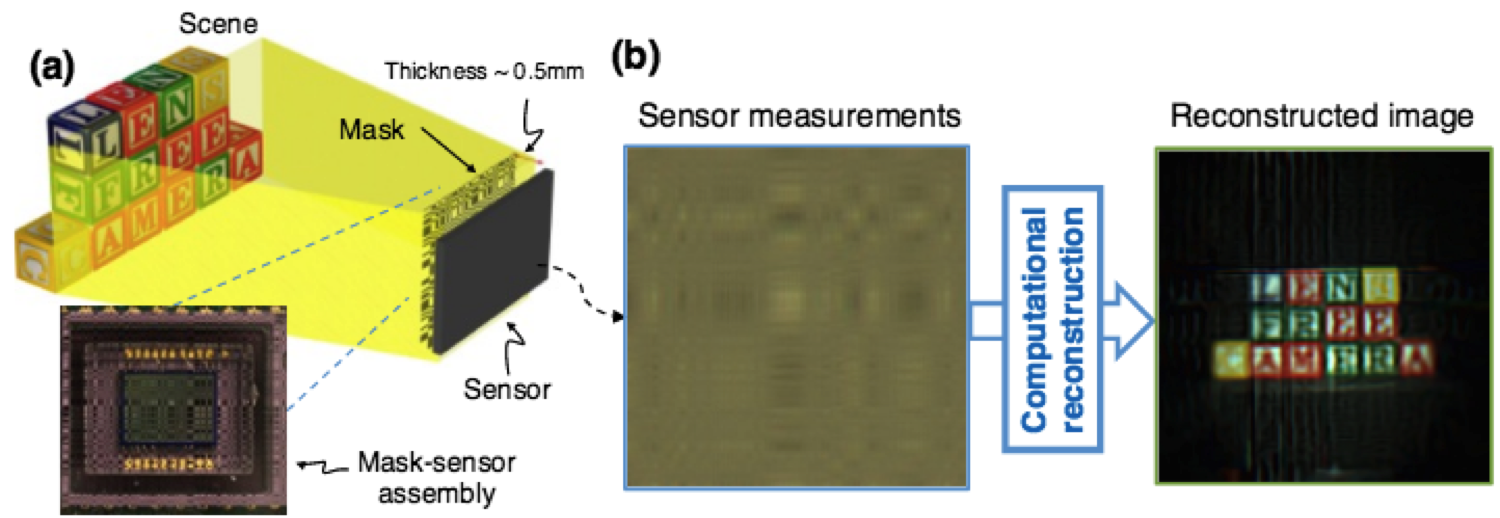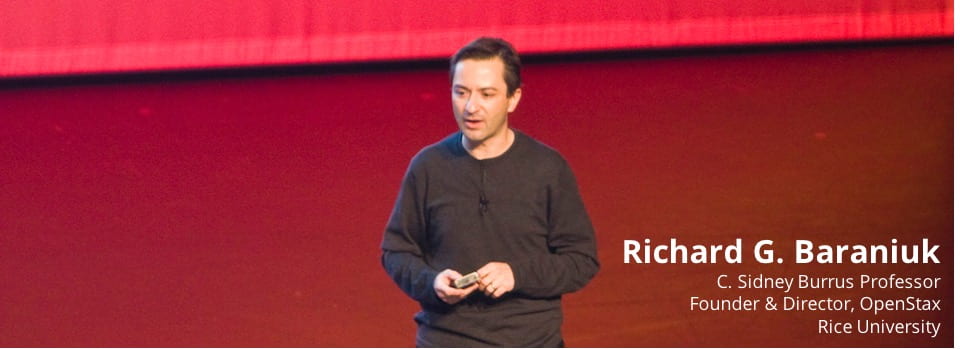M. S. Asif, A. Ayremlou, A. Sankaranarayanan, A. Veeraraghavan, and R. G. Baraniuk, "FlatCam: Thin, Bare-Sensor Cameras using Coded Aperture and Computation," arXiv preprint arxiv.org/abs/1509.00116, 2015
 FlatCam is a thin form-factor lensless camera that consists of a coded mask placed on top of a bare, conventional sensor array. Unlike a traditional, lens-based camera where an image of the scene is directly recorded on the sensor pixels, each pixel in FlatCam records a linear combination of light from multiple scene elements. A computational algorithm is then used to demultiplex the recorded measurements and reconstruct an image of the scene. FlatCam is an instance of a coded aperture imaging system; however, unlike the vast majority of related work, we place the coded mask extremely close to the image sensor that can enable a thin system. We employ a separable mask to ensure that both calibration and image reconstruction are scalable in terms of memory requirements and computational complexity. We demonstrate the potential of the FlatCam design using two prototypes: one at visible wavelengths and one at infrared wavelengths.
FlatCam is a thin form-factor lensless camera that consists of a coded mask placed on top of a bare, conventional sensor array. Unlike a traditional, lens-based camera where an image of the scene is directly recorded on the sensor pixels, each pixel in FlatCam records a linear combination of light from multiple scene elements. A computational algorithm is then used to demultiplex the recorded measurements and reconstruct an image of the scene. FlatCam is an instance of a coded aperture imaging system; however, unlike the vast majority of related work, we place the coded mask extremely close to the image sensor that can enable a thin system. We employ a separable mask to ensure that both calibration and image reconstruction are scalable in terms of memory requirements and computational complexity. We demonstrate the potential of the FlatCam design using two prototypes: one at visible wavelengths and one at infrared wavelengths.
 FlatCam architecture. (a) Every light source within the camera field-of-view contributes to every pixel in the multiplexed image formed on the sensor. A computational algorithm reconstructs the image of the scene. Inset shows the mask-sensor assembly of our prototype in which a binary, coded mask is placed 0.5mm away from an off-the-shelf digital image sensor. (b) An example of sensor measurements and the image reconstructed by solving a computational inverse problem.
FlatCam architecture. (a) Every light source within the camera field-of-view contributes to every pixel in the multiplexed image formed on the sensor. A computational algorithm reconstructs the image of the scene. Inset shows the mask-sensor assembly of our prototype in which a binary, coded mask is placed 0.5mm away from an off-the-shelf digital image sensor. (b) An example of sensor measurements and the image reconstructed by solving a computational inverse problem.
Press coverage:
- NBC News
- NPR All Tech Considered
- WGN Chicago
- Daily Mail (UK)
- Phys.org
- Futurity
- Gizmag
- Security Info Watch
- NSF "Discovery Files" podcast, radio
- NSF "Science 360" video
